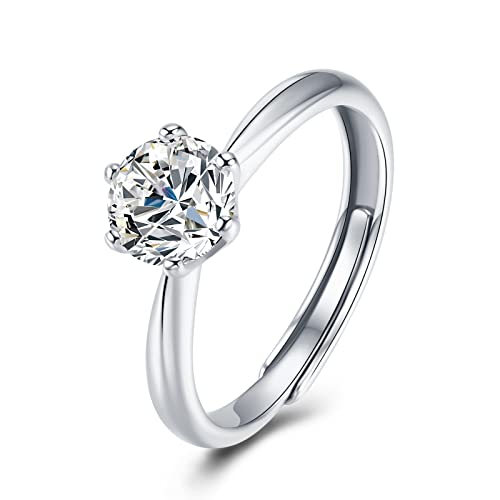Myth vs. Reality: Common Misconceptions About Engagement Rings
Engagement rings are symbols of love and commitment, but unfortunately, misconceptions about these precious pieces of jewelry abound. Here are some common myths about engagement rings and the truth behind them:
Myth 1: An Engagement Ring Should Cost Three Months’ Salary
One of the most persistent misconceptions about engagement rings is that they should cost three months’ salary. This idea was popularized by diamond company De Beers in the 1930s, but it’s not based on any real tradition or requirement. The truth is that there’s no “right” amount to spend on an engagement ring. The most important thing is to choose a ring that you can afford and that your partner will love.
Myth 2: The Bigger the Diamond, the Better
Thanks to a century of aggressive marketing by diamond companies, many people believe that the size of the diamond in an engagement ring is the most important factor. However, bigger isn’t always better. The quality of the diamond’s cut, clarity, and color are all more important than the size. Plus, there are plenty of beautiful engagement rings that feature non-diamond gemstones, such as sapphires or emeralds.
Myth 3: Your Partner Shouldn’t Be Involved in Choosing the Ring
Another common misconception about engagement rings is that the proposer should choose the ring alone, without any input from their partner. While it’s true that some people enjoy the surprise of being proposed to with a ring they’ve never seen before, others prefer to be involved in the selection process. If you’re not sure what your partner would like, consider shopping together, or at least getting some guidance from their friends or family.
Myth 4: A Diamond Ring Will Always Hold Its Value
Many people assume that an engagement ring, especially one with a high-quality diamond, is a smart investment that will hold its value over time. Unfortunately, that’s not necessarily true. Unlike stocks or real estate, jewelry isn’t a guaranteed investment, and you shouldn’t expect to sell a ring for the same price you paid for it. That’s not to say that an engagement ring isn’t worth the money—it just might not appreciate in value over time.
Myth 5: The Ring Is What Matters Most
Finally, perhaps the biggest myth about engagement rings is that they’re the most important part of a proposal. While a beautiful ring can certainly be a meaningful symbol of love and commitment, it’s not the only thing that matters. At the end of the day, what’s most important is the love and devotion you share with your partner. If you’re planning to propose, don’t stress too much about the ring—focus on what really matters: the two of you.






